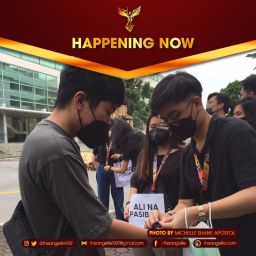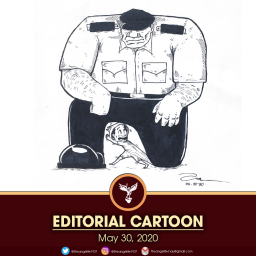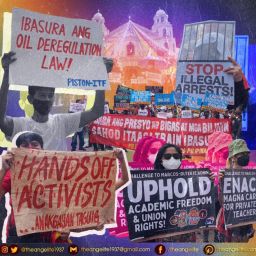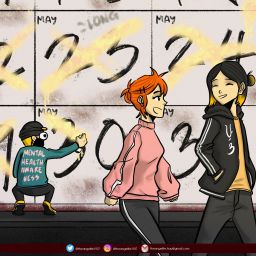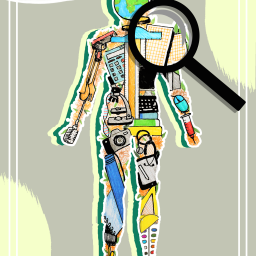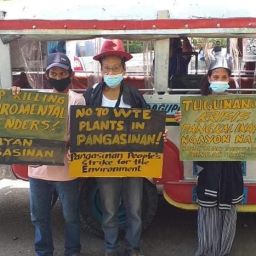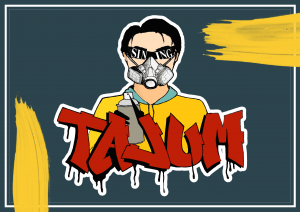 Art exists everywhere, it is often seen in the most unlikely of places. Back in grade school, art class has always been my favorite subject. It was free from numbers, equations, or even lengthy essays. I would pick my pencil to sketch or perhaps my brush and start painting a cloud or two. To me, art has always been for the sole purpose of entertainment. When asked about art, a Picasso classic or Warhol’s Campbell soup would instantly come to mind. In school, we were taught that art is supposed to be aesthetically beautiful and it is up to the onlooker to interpret what it tries to convey -yet social realism suggests the opposite.
Art exists everywhere, it is often seen in the most unlikely of places. Back in grade school, art class has always been my favorite subject. It was free from numbers, equations, or even lengthy essays. I would pick my pencil to sketch or perhaps my brush and start painting a cloud or two. To me, art has always been for the sole purpose of entertainment. When asked about art, a Picasso classic or Warhol’s Campbell soup would instantly come to mind. In school, we were taught that art is supposed to be aesthetically beautiful and it is up to the onlooker to interpret what it tries to convey -yet social realism suggests the opposite.
Born out of the brimming tyrannical rule, economic depressions, and workers exploitation plaguing all over the globe; social realists used art to portray the struggles that the poor, and the working class are facing. Social realists aim to be empathetic, easily understood and relatable to the masses. They immersed themselves among the toiling class, inside scorching and perilous factories. In these experiences, they were able to use brush strokes and paint to expose the lives opposite what the wealthy were living.
For those who are detached from reality it would come up as unsettling, and disturbing but then social realists don’t aim to please. What social realists aim to show are the harsh realities that both the wealthy and the middle class tend to ignore. Protest art is, therefore, a form of social realism from which intends to challenge the status quo.
Art — a catalyst for change
Protest art has been very well alive all around the modern world. From Banksy’s sophisticated and satirical street art to anti-fascist, and anti-imperalist slogans sprayed on walls. This kind of art has garnered varying reactions from people; some would say it has of great relevance while some would dismiss it as a nuisance. On the contrary, its end goal is to spark discourse among the public and to reveal the everyday hardships the marginalized experience.
In the Philippines, we have our fair share of protest artworks. The story of our country is a story of class struggle, the poor and marginalized against the ruling elites. In recent events, progressive youths hit the headlines after “Graffiesta”, an initiative which filled public walls and spaces of Manila with graffiti, stencil, and wheatpaste art calling attention to important national and socio-economic issues. Sprayed paint walls of ATIN ANG PINAS, CHINA LAYAS called for the sovereignty of our nation amidst the West Philippines Sea dispute and the failure of our government to defend its own property. Part of the protest is protest art. As the Filipino masses resort to protest actions to fight for their rights, it is often met with distaste rather than giving attention to the call for the rights of the farmers, peasants, and even typical Filipino citizens.
Art — a way of expression
Graffiti protest art has a sole goal— to expose the current status quo and critique the existing governing system. As we were born into a world where art is seen as a separate entity from politics, where art must be for art’s sake and nothing else; protest art strays us away from our comfort zones. It is a complete turn around with the kind of art we have been used to seeing, it is not an abstract of colors or fruits and vegetables in still life. It is contrary to what the rotten system has taught us because unlike the latter, it is not constrained on simply just aesthetic value but rather a revolutionary kind of art that brings about socio-economic and political change.
Protest art delivers what those in the ivory tower cannot see: the farmers amidst the sweltering sun striving every day to put food on their plates and the workers with the unlivable paying wage in harsh working conditions. It exists for a purpose not to “vandalize” but to awaken the consciousness of the masses.
Art — a way to break the chains
Some would argue that no matter how artistic it is, it remains to be labeled as vandalism hidden under the guise of “protest” but it is the furthest thing from the truth. The words “graffiti” and “vandalism” are actually two different words, as stated by Iñigo Abellar, Graffiti comes from the word “Graphein” which means to write, and “Vandalism” is a corrupted term used by the State to classify public destruction of property. Graffiti is demonized and dubbed as vandal and seen as a destructive and subversive act. Protest art exposes the ruling class but the oppressed masses know no tiresom in demanding for what is right.
Art is indeed everywhere, it is seen posted on walls or glued on light posts. Art is a catalyst for change as it has always served for ages, it aspires to open the political consciousness of the people. Art is a way to express what is experience, to show what is being hidden away. Art is a way to break the chains that bind the people. Protest art is a weapon of the masses and it continues to exist as long as a culture of exploitation and oppression exists. It becomes as a challenge to the administration to prove that they serve the interest of the people and not the few, to open their minds about the the Philippines’ harsh reality.
Art by Shara Comullo




